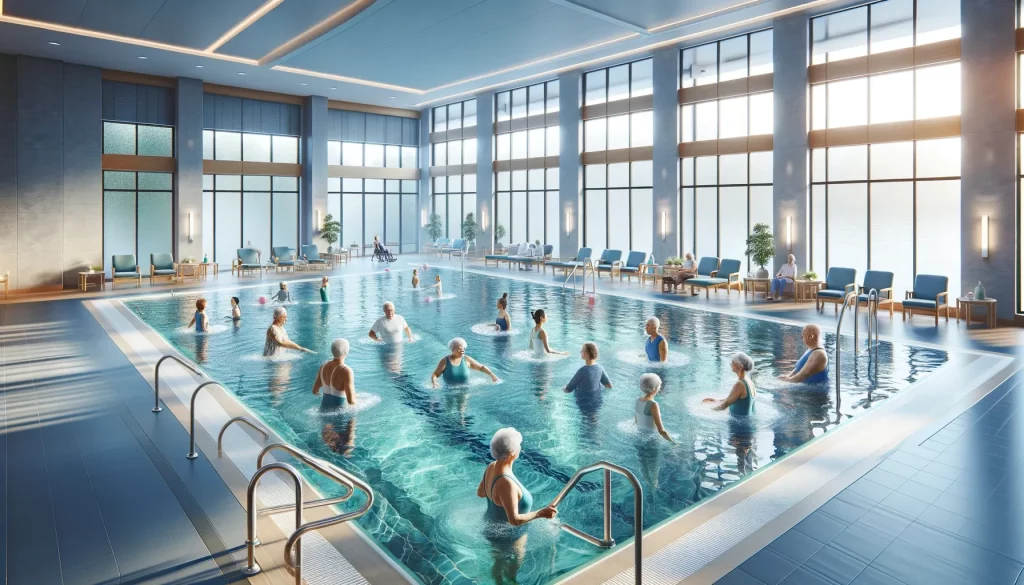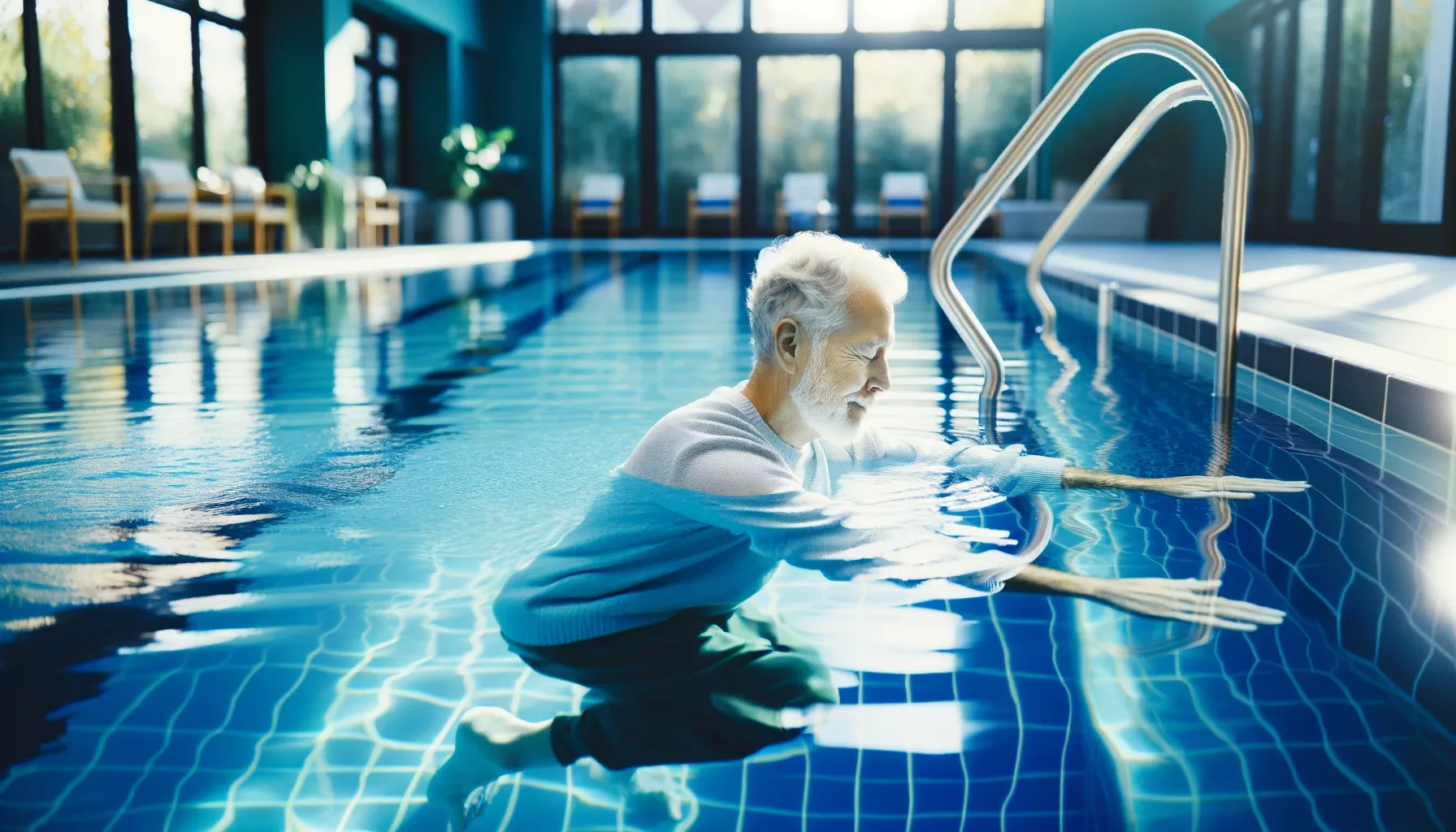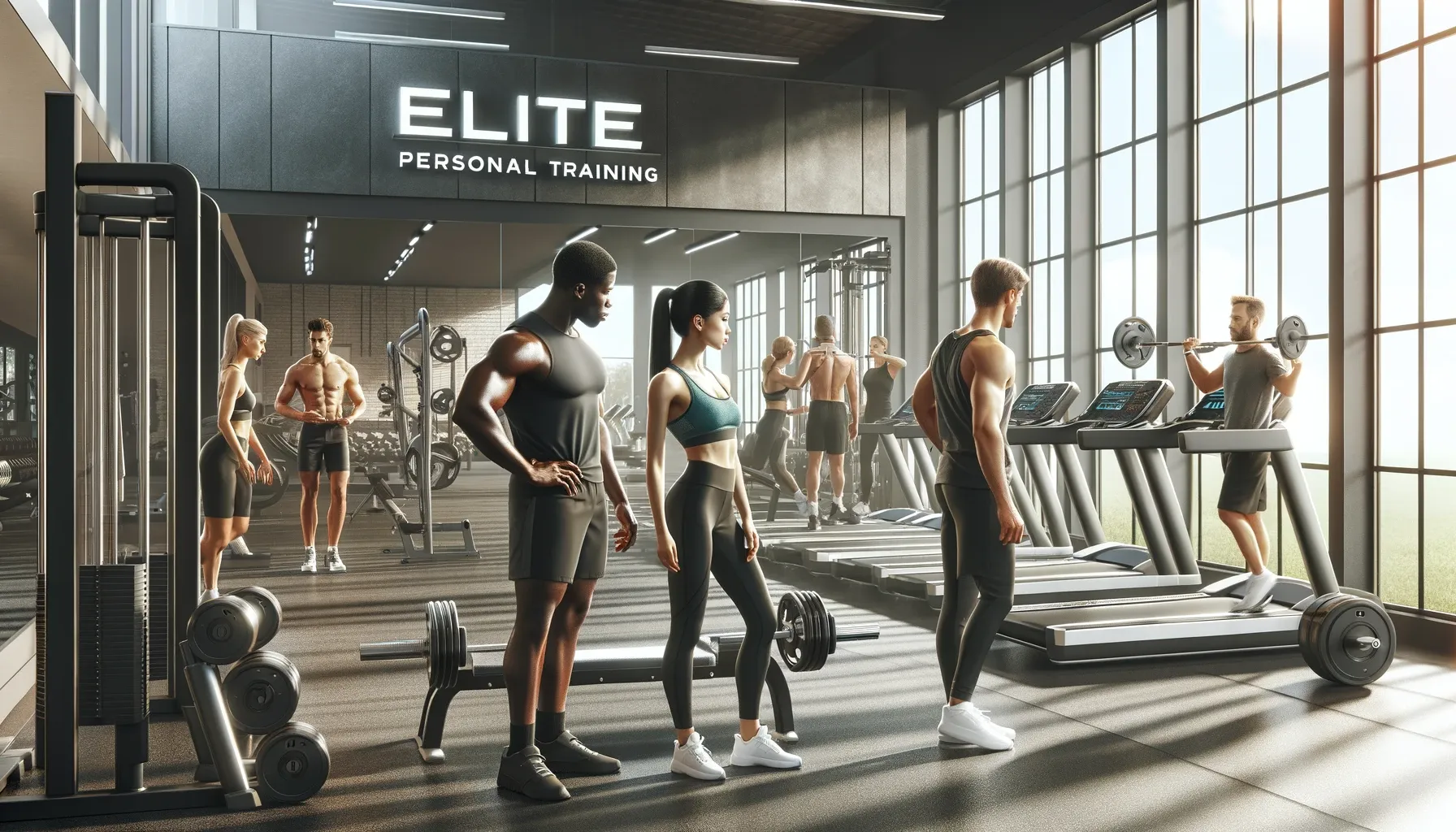Table of Contents
If you’re a senior or caring for one, exploring the world of rehabilitation can be a journey filled with discovery and hope. One of the most therapeutic and enjoyable paths in this journey is aquatic therapy. It’s a form of rehabilitation that utilizes the unique properties of water to aid in the recovery and maintenance of physical health. The beauty of aquatic therapy lies in its gentle approach. This makes it a perfect fit for seniors, especially those recovering from injuries, surgeries, or managing chronic conditions.
Understanding Aquatic Therapy
Aquatic therapy, often referred to as hydrotherapy, involves a series of exercises performed in a pool, specifically designed to aid rehabilitation and improve physical health. This method harnesses the unique properties of water, primarily its buoyancy, to create a low-impact exercise environment. This buoyancy is a game-changer, as it significantly reduces the stress and strain on joints and muscles, making it ideal for seniors who might find traditional land-based exercises too challenging or painful. It’s important to understand that aquatic therapy isn’t limited to swimming. It encompasses a variety of exercises, ranging from simple movements like walking or stretching in water to more structured aquatic aerobics.
The second aspect of aquatic therapy that’s crucial to its effectiveness is the resistance provided by water. This natural resistance helps in gently strengthening muscles and improving endurance, but without the harsh impact of gravity that one experiences on land. For seniors, this means they can work on building muscle strength and improving their cardiovascular health in a much safer environment. Additionally, water offers a natural compression, which is beneficial for reducing swelling and improving circulation. This resistance, combined with the soothing warmth of the water found in many therapeutic pools, makes aquatic therapy not just a physical rehabilitation tool, but also a holistic approach to improving overall well-being for seniors.
The Benefits for Seniors
Aquatic therapy offers a myriad of benefits tailored specifically to the needs and capabilities of seniors. One of the most significant advantages is the enhancement of joint flexibility. The buoyancy of water greatly reduces the gravitational pull on the body, allowing seniors to move more freely and with less pain. This is particularly advantageous for those struggling with arthritis or recovering from joint-related surgeries. The ease of movement in water can help in maintaining and even increasing the range of motion, which is crucial for daily activities. Additionally, aquatic therapy is immensely beneficial for cardiovascular health. The exercises, though gentle, are effective in raising the heart rate and promoting better blood circulation, which is essential for overall health and well-being in older adults.
Warm water in therapeutic pools is known for its soothing effects on aching muscles and joints, providing natural pain relief and reducing inflammation. This aspect of aquatic therapy can lead to a significant reduction in discomfort, encouraging a more active and fulfilling lifestyle. Furthermore, the therapy aids in improving balance and coordination, which is a common concern among the elderly. The fear of falling and sustaining injuries often limits physical activities on land. However, the safe environment of the water allows seniors to work on their balance and coordination with a reduced risk of falls. This not only improves physical capabilities but also boosts confidence and independence, contributing to better mental health and quality of life.

Adapting Aquatic Exercises
Each senior’s needs and talents are precise, mainly on the subject of rehabilitation. Therefore, it is critical to have software that is custom-tailor-made to man or woman necessities. For some, this could contain mild exercises focusing normally on mobility and versatility. These sporting activities are perfect for folks who are simply starting their rehabilitation adventure or have confined bodily capabilities. For others, particularly those who are similarly along in their healing or have higher bodily health tiers, the program may encompass extra in-depth physical games aimed toward rebuilding energy and persistence. A customized method ensures that the activities are not only secure and powerful but additionally align with each person’s health desires and cutting-edge bodily situation.
Initially, a professional therapist assesses the senior’s current health status, medical history, and rehabilitation goals. Based on this assessment, a specific set of exercises is selected and a routine is established. Once progress occurs, the exercises are adjusted in intensity and complexity. This dynamic approach is key to ensuring continuous improvement in physical health. It’s also essential for keeping the senior engaged and motivated, as new challenges keep the therapy interesting and rewarding. Regular evaluations are part of this process, helping to track progress and make necessary adjustments to the program. This continuous customization not only maximizes the benefits of aquatic therapy but also ensures a safer and more enjoyable experience for seniors.
Incorporating Water Aerobics
Water aerobics for seniors is a holistic activity that combines physical health benefits with social interaction and fun. These classes are designed with the older adult in mind, focusing on low-impact movements that improve cardiovascular health, enhance muscle strength, and boost flexibility without putting undue stress on the body. Moreover, the buoyancy of water reduces the risk of injury and strain, making it an ideal form of exercise for those with mobility issues or chronic pain. Beyond physical health, water aerobics classes offer a communal space where seniors can socialize, share experiences, and foster a sense of belonging, which is vital for mental and emotional well-being.
First and most important, finding the proper magnificence is prime. Many community centers, gyms, and senior facilities offer water aerobics lessons particularly designed for older adults. These training are regularly led by using skilled teachers who apprehend the particular desires of seniors and might modify physical games to deal with various fitness degrees and physical limitations. It’s also important for seniors to start at a pace that is cushty for them, progressively growing the depth and duration of the sports as their confidence and ability grow. Consistency is key in reaping the total blessings of water aerobics, so ordinary attendance is recommended. Additionally, those instructions frequently provide an possibility to study other components of healthy dwelling, consisting of nutrition and lifestyle alternatives, making them a complete approach to senior fitness and wellbeing.
Final Thought
Aquatic therapy represents a wonderful opportunity for seniors to improve their physical health in a safe, enjoyable, and effective way. Whether it’s through individual exercises or joining a water aerobics class, the therapeutic power of water can play an important role in senior rehabilitation. Remember, it’s about finding joy in movement and celebrating the progress you make along the way. So, take that first step into the pool and let the healing waters be your guide to a healthier, happier you.

Liam Stephens is a dynamic and skilled blogger, recognized for his ability to identify trends and create compelling content. As the founder of Remi-Portrait.com, Liam has become a reliable source of information across various fields such as food, technology, health, travel, business, lifestyle, and current events. He specializes in delivering up-to-date technology news and insights, catering to the diverse community that surrounds Remi-Portrait.com. His proficiency and engaging writing style have earned him a dedicated audience, solidifying his reputation in the digital sphere.



